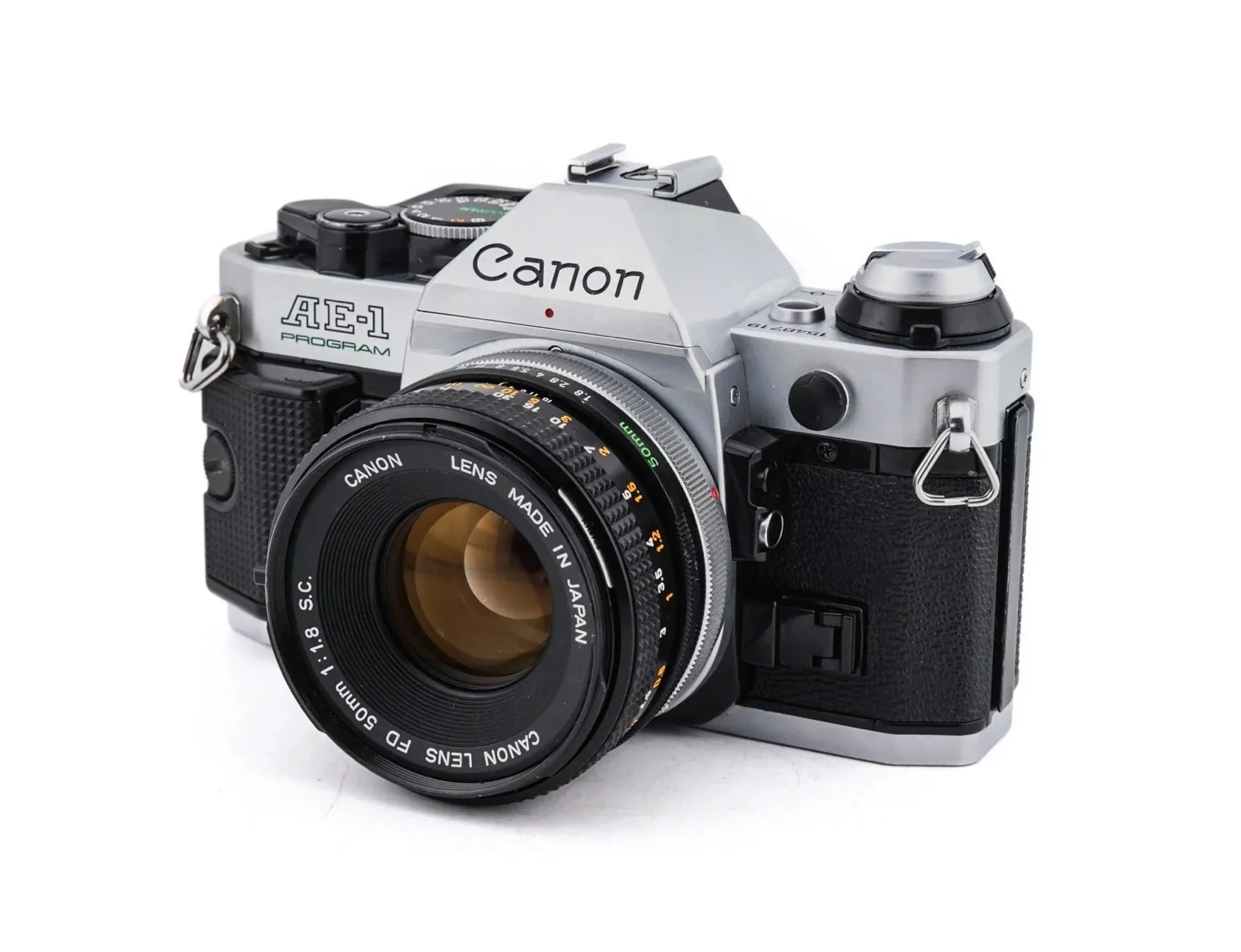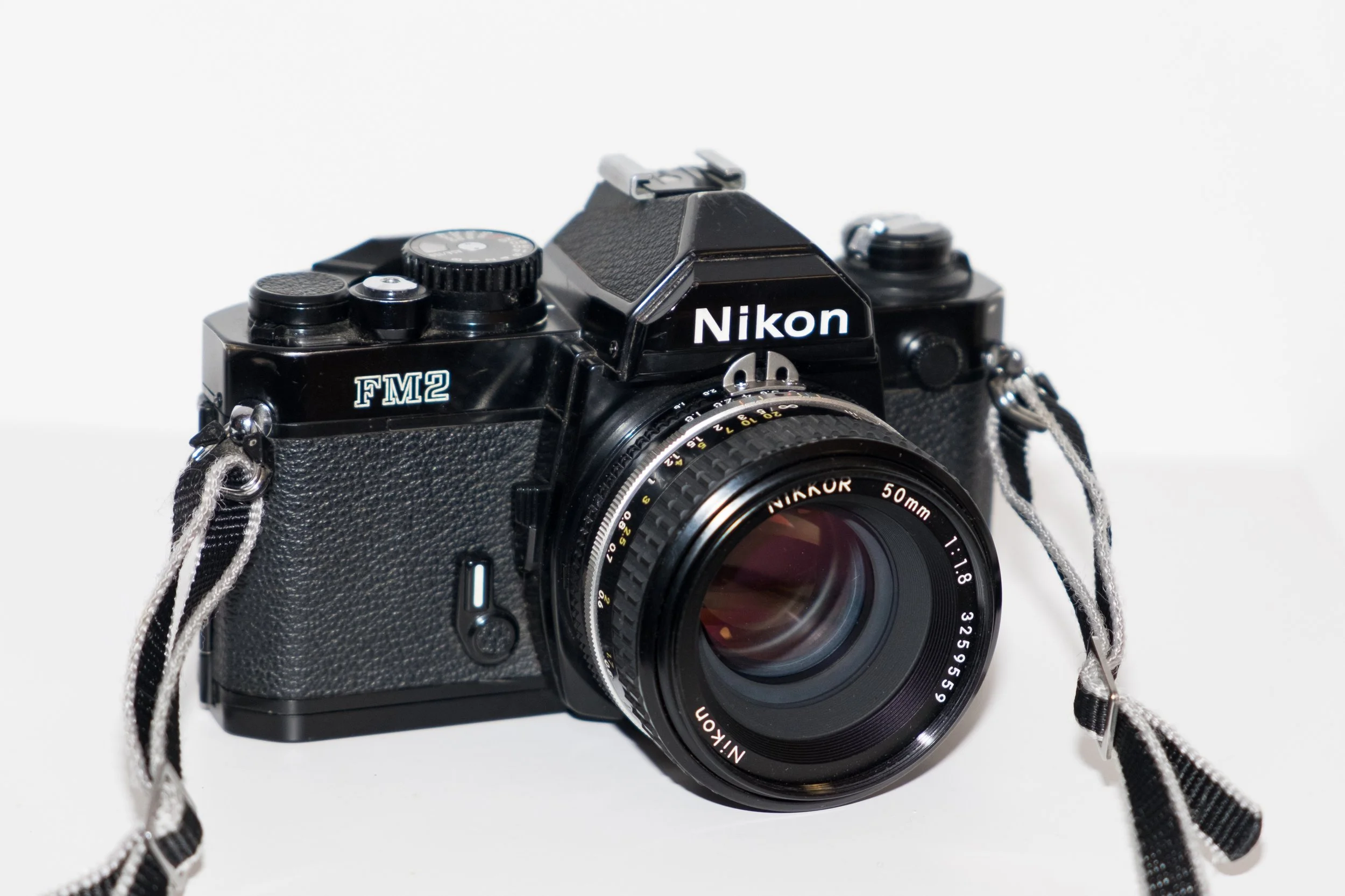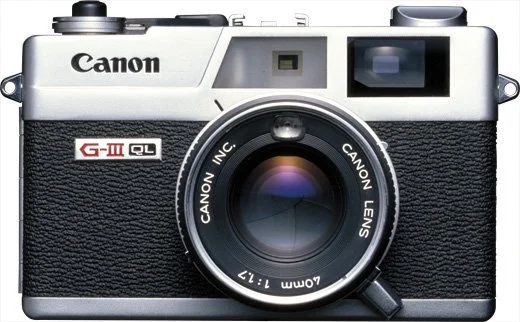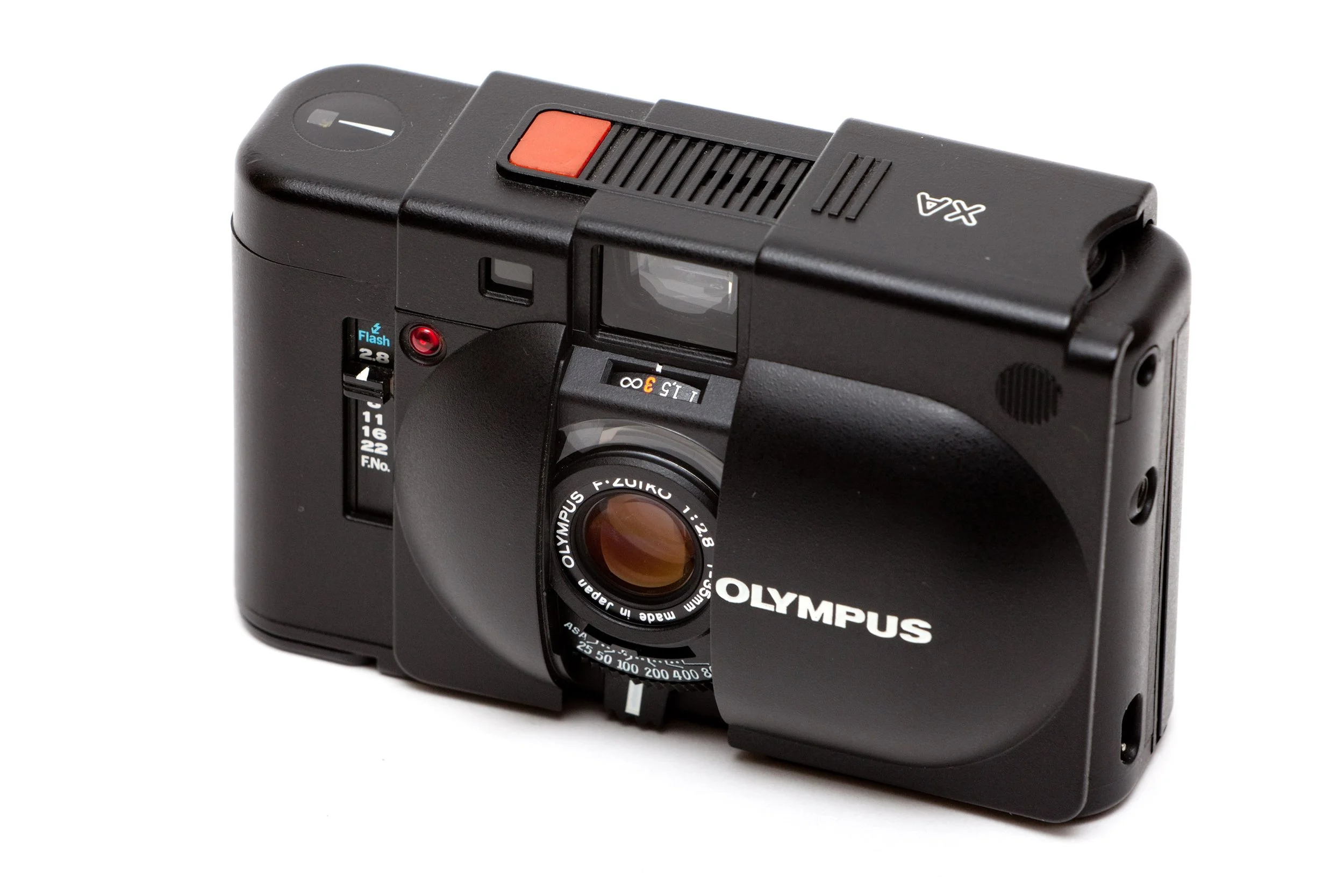The 10 Best Used 35mm Film Cameras (and who they’re perfect for)
Hunting for a used 35mm film camera can feel like thrifting for a leather jacket—half the fun is in the chase, and the “right” one is the one that fits your style and budget. Below are ten time-tested winners you can still find on the used market. I’ve mixed manual-focus SLRs, autofocus sleepers, rangefinders, and pocketable compacts so there’s something for every kind of shooter. For each pick you’ll get a quick vibe check, what it does brilliantly, and what to watch out for before you click “buy.”
1) Pentax K1000 — The Forever Student Camera
Why it’s great: The K1000 is the gateway drug of film SLRs: fully mechanical, straightforward, and built like a brick. One needle-in-the-viewfinder meter, one shutter speed dial, one ISO ring—done. The Pentax K-mount lens ecosystem is huge and affordable, from the classic 50mm f/2 to gorgeous SMC primes.
Best for: Beginners, teachers, and anyone who wants a no-nonsense camera that just works.
Pros
All-mechanical shutter (fires without batteries)
Vast, inexpensive K-mount lenses
Simple meter you can learn in 5 minutes
Cons
No aperture-priority or program modes
Meter uses now-old LEDs/needle; check accuracy
Prices have climbed thanks to its reputation
Buying tip: Budget for a CLA (clean, lube, adjust) if the advance feels gritty or the meter is jumpy.
2) Canon AE-1 Program — The Crowd-Pleaser
Why it’s great: The AE-1 Program modernized SLR shooting for the masses: Program and shutter-priority modes with a bright finder and punchy Canon FD glass. It’s a step up in automation while keeping that classic feel.
Best for: Shooters who want dependable auto exposure with manual control nearby.
Pros
Program mode for point-and-shoot simplicity
Excellent, affordable FD lenses (28/2.8, 50/1.4, 135/2.8)
Easy to find bodies and parts
Cons
The infamous “shutter squeak” (serviceable, but listen for it)
Requires battery for shutter
FD mount is orphaned (not a con if you’re staying in film land)
Buying tip: Dry fire on all speeds. A sluggish mirror return or squeal means it’s due for service.
3) Nikon FM2 (or FM2n) — The Tank with a Stopwatch
Why it’s great: A pro-grade, fully mechanical Nikon with 1/4000s top speed and 1/250s flash sync. If you love manual focus and precision, the FM2 is a lifetime camera that’s happy in rain, cold, and chaos.
Best for: Street shooters, travel photographers, and anyone who wants indestructible reliability.
Pros
Mechanical shutter, meter sips power
1/4000s + 1/250s sync is fantastic for daylight flash
Access to Nikon F-mount glass from budget to legendary (AI/AI-S)
Cons
No auto exposure
Good copies aren’t cheap
Meter readout is basic LEDs (some prefer a needle)
Buying tip: Confirm the lens mount indexing (AI/AI-S) and avoid pre-AI lenses unless they’ve been converted.
4) Olympus OM-1 (or OM-1n) — The Compact Classic
Why it’s great: Small, quiet, and elegant. The shutter speed ring around the lens throat makes for fast, intuitive control. Zuiko primes are sharp, lightweight, and underrated.
Best for: Minimalists, hikers, and anyone who wants an SLR that feels like a rangefinder.
Pros
Tiny for an SLR; whispery shutter
Beautiful Zuiko prime lenses (28/3.5, 50/1.8, 85/2)
All-mechanical operation
Cons
Designed for mercury PX625 cells; plan a meter mod or adapter
Light seals often need replacing
OM system accessories can be more niche to source
Buying tip: Ask if the meter has been converted or calibrated for modern 1.5v cells.
5) Minolta X-700 — The Aperture-Priority Overachiever
Why it’s great: APEX-priority joy with a bright finder and superb Minolta Rokkor glass. It adds Program mode, TTL flash, and an easy user experience—without Leica prices.
Best for: Creatives who want aperture priority and gorgeous color rendering from classic Rokkors.
Pros
Aperture priority + Program mode
Great ergonomics; crisp viewfinder
Rokkor primes are stellar and good value
Cons
Common capacitor failure (power-up issues)
Battery dependent for all shutter speeds
Slightly plasticky compared to earlier Minoltas
Buying tip: Look for documentation of a capacitor replacement; it’s a known longevity fix.
6) Canon EOS-3 — Autofocus Sleeper with Pro DNA
Why it’s great: If you want modern AF in a film body, the EOS-3 is a beast: fast AF, 45 AF points, 1/8000s shutter, and compatibility with EF lenses (including L-glass). Eye-controlled focus is a party trick that actually works for many users.
Best for: Action, portrait, and wedding shooters who already own EF lenses—or want modern performance.
Pros
Top-tier AF and metering for film
1/8000s + advanced flash system
EF lens compatibility (huge ecosystem)
Cons
Larger, heavier body
Some features need custom functions learning curve
Batteries are 2CR5 (easy to get, but not AAA-cheap)
Buying tip: Check the rubberized coating and command dial for wear; test eye-control calibration if possible.
7) Nikon F3 — The Pro Workhorse with Soul
Why it’s great: Designed by Giugiaro, built for newsrooms and war zones. The F3 offers aperture priority with a buttery manual experience and a huge system of finders, backs, and screens if you like to tinker.
Best for: Serious shooters who appreciate modularity and a dense, premium feel.
Pros
Pro build and silky controls
Aperture priority + full manual
Extensive accessories; crisp 80/20 center-weighted meter
Cons
LCD in finder can fade with age
Requires batteries for shutter (mechanical backup at 1/60 “M90”)
Heavier than consumer bodies
Buying tip: Inspect the prism LCD and light meter accuracy; many F3s are still spot-on if cared for.
8) Canonet QL17 GIII — The Street-Smart Rangefinder
Why it’s great: A fixed-lens 40mm f/1.7 rangefinder that slides into a coat pocket, focuses quickly, and looks classy. Leaf shutter = quiet. Perfect for candid family shots and urban wandering.
Best for: Street photographers and travelers who want small, quiet, and sharp.
Pros
Fast 40/1.7 lens with pleasing rendering
Quick-load film system is genuinely handy
Shutter is near-silent; great for indoor low light
Cons
Mercury battery era (meter workarounds needed)
Rangefinder patch can be dim; check alignment
Minimum focus not as close as SLRs
Buying tip: Ask about a meter conversion or plan to use a handheld/phone meter. Verify rangefinder contrast.
9) Olympus XA (or XA2) — The Pocket Spy
Why it’s great: A true pocket camera with a sliding clamshell, off-the-charts stealth factor, and a surprisingly sharp 35mm lens. The XA (rangefinder) gives you aperture priority and focus; the XA2 is zone-focus simplicity.
Best for: Everyday carry, concerts, and travel where you want “invisible” shooting.
Pros
Fits in jeans pocket with room to spare
Quiet leaf shutter; zero intimidation factor
XA has a real rangefinder; XA2 is point-and-shoot simple
Cons
Rangefinder baselength is short; critical focus takes practice (XA)
Fragile feeling if abused; keep it in a pouch
Flash is a detachable accessory (A11/A16)
Buying tip: Ensure the clamshell slides smoothly and the light meter responds quickly to changes.
10) Yashica T4 (or T4 Super/T5) — The Cult Compact
Why it’s great: Beloved for its Zeiss Tessar 35mm f/3.5 lens and straightforward automation, the T4 turns everyday scenes into punchy, high-contrast prints. Weather-resistant, with a quirky waist-level “Super Scope” on the T4 Super/T5.
Best for: Point-and-shoot fans who want great glass without thinking too hard.
Pros
Zeiss Tessar lens is crisp with great micro-contrast
True pocket camera with auto everything
Weather-sealed enough for drizzle and beach days
Cons
Prices can be… ambitious
Fully automatic exposure can fight you in tricky light
Electronics are not service-friendly
Buying tip: Test the flash charge time and AF confirmation; pass on bodies with LCD bleed or corrosion.
Choosing the Right Body for You
On a tight budget?
Pentax K1000, Minolta X-700, or Olympus OM-1 bodies with a 50mm prime deliver pro-looking results for less. Your money goes further on glass here than with Nikon/Canon pro lines.
Want autofocus and speed?
Canon EOS-3 is a bargain pro experience, especially if you already own EF lenses. It’s the easiest jump from modern digital to film without relearning everything.
Prefer small and discreet?
Olympus XA/XA2 or Canonet QL17 GIII rule the compact, quiet niche. The Yashica T4 adds true point-and-shoot ease with stellar optics.
Crave pro feel and longevity?
Nikon FM2/FM2n (mechanical precision) or Nikon F3 (pro sophistication) are lifetime keepers with tons of lens options.
What to Check Before You Buy
Light seals & mirror foam: Crumbling foam = light leaks and goop. Replacing seals is cheap and DIY-able.
Shutter accuracy: Listen for hesitations at slow speeds; inconsistent exposures suggest a service is due.
Meter behavior: Aim from bright window to dark room—the needle/LEDs should respond smoothly.
Battery type: Some classics were designed for mercury cells. Plan for adapters, recalibration, or handheld metering.
Common model quirks:
AE-1 Program: shutter squeak (serviceable)
X-700: capacitors (replace and forget)
OM-1: meter battery conversion
T4: electronics/lcd health is make-or-break
Lens condition: Shine a flashlight through—look for haze, fungus threads, separation, or oily aperture blades.
Lenses: Where the Magic Happens
Even the best body is just a film transport without good glass. A few no-brainer starting points:
50mm normals: Cheap, fast, and sharp on every system (Pentax 50/1.7, Canon FD 50/1.4, Nikon 50/1.8 AI-S, Minolta 50/1.7).
Wides: Olympus 28/3.5 Zuiko and Nikon 28/2.8 AI-S are stellar values.
Portraits: Canon FD 85/1.8, Minolta 85/2, or Nikkor 105/2.5 for classic rendering.
Film Stocks That Pair Nicely
Everyday color: Kodak Gold 200 or Ultramax 400 for warm, punchy family photos.
Fine-grain color: Kodak Portra 160/400 for skin tones and latitude.
Black & white: Ilford HP5+ (for flexibility) or Kodak Tri-X (for that timeless grit).
Experiment: Cinestill 800T for neon nights or any ECN-2 stock if your lab (hi! 👋) processes it properly.
Final Frames
The “best” used 35mm camera is the one that makes you want to take it everywhere. If you’re learning exposure, grab a Pentax K1000 or Nikon FM2 and build muscle memory. If you want modern convenience, the Canon EOS-3 feels like a DSLR that happens to shoot film. Craving stealth? Pocket an Olympus XA or Yashica T4 and capture life as it happens.
Whichever you choose, give it fresh light seals, load a roll you’re excited about, and get out there. And when you’re ready to see those frames shine, send them to Shutter Junkies Photo Lab—we develop 35mm (C-41, B&W, and ECN-2), scan with care, and ship nationwide. We’ll treat your new-to-you classic like it’s our own.










